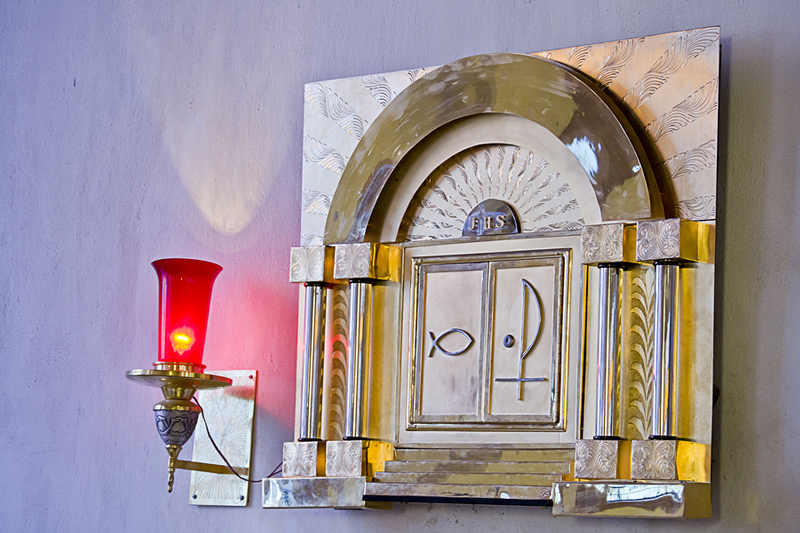
A distinguishing feature of any Catholic church is its tabernacle. Meaning “dwelling place” in Hebrew, the tabernacle may be made of diverse elements and found in different parts of a church, but always features a prominent light nearby.
In the Old Testament, the tabernacle was first edified by the Israelites in the desert. After being led through the Red Sea by a pillar of fire, the Hebrews realized they were in the middle of the desert and feared the Lord had abandoned them. So God asked Moses to collect precious materials to build a portable tabernacle that would serve as a constant reminder of God’s presence with the people.
Interestingly, each time Moses entered the tabernacle, the pillar of fire that led the Israelites out of Egypt through the desert would en-velope the tent. Once the Ark of the Covenant was placed inside, God asked the Israelites to burn pure olive oil in the tabernacle to create a light that would indicate His presence. This light would be carried into the Temple once the Israelites settled the Promised Land.
Light shining was a visible reminder of God’s Covenant present among the people. This was not lost on Christians. At the Last Supper, Jesus spoke of a new Covenant in His Blood. The first Christians did not reserve the Eucharist so much for devotion outside of Mass as they did to take it to those too ill to attend Mass. In the early centuries, whatever Eucharist remained after Mass would be stored in a side room. Even then, however, a light was kept burning near the reserved Eucharist to indicate the presence of the new Covenant.
It wasn’t until the Reformation that most churches began to reserve the Blessed Sacrament in the main altar of the church in an effort to stress the belief in the Real Eucharistic Presence of Christ. By then, church altars had become ornate pieces of art heavily decorated with many votive candles, some of which were suspended above the altars. When the Blessed Sacrament was moved to the main altar, the lit candle that had always accompanied it would most often be encased in a red globe to distinguish it from other candles.
Today, many mistakenly think that the Tabernacle candle has to be red, but this is untrue. All that is stipulated is that a special lamp fueled by oil or wax, but not by electricity, should shine permanently to indicate and honor the presence of Christ. From this, one could conclude that a clear light would better reflect the spotlessness of “the Light of the World.”
In a country where an eternal flame burns over the grave of an assassinated former president, the political legacy of whom admirers hope will never be forgotten, we do well to gather in our local house of God to bask in the light of the New Covenant. The One who led the Israelites by a pillar of fire now resides in every tabernacle of the world. No wonder He taught, “let your light shine!”

